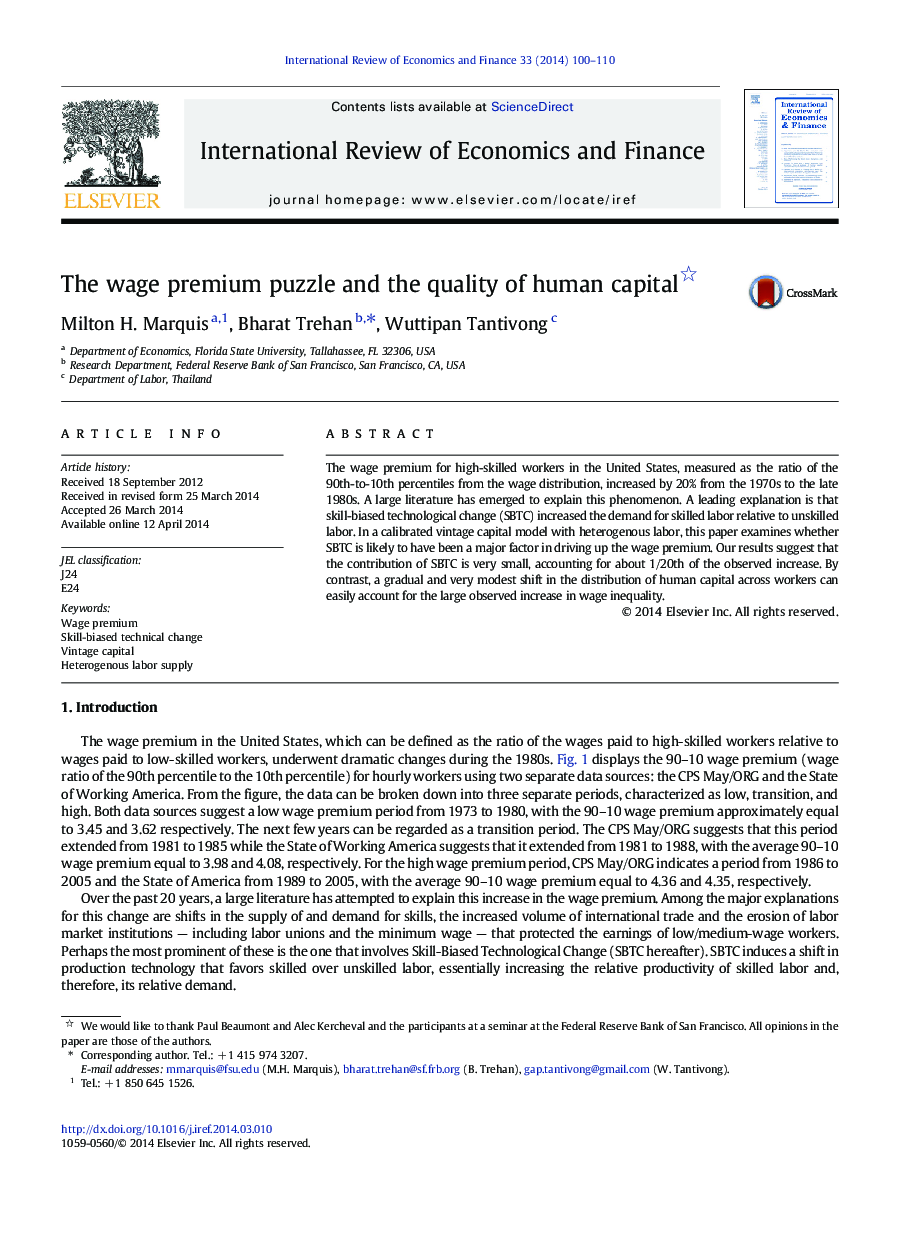| کد مقاله | کد نشریه | سال انتشار | مقاله انگلیسی | نسخه تمام متن |
|---|---|---|---|---|
| 5083482 | 1477809 | 2014 | 11 صفحه PDF | دانلود رایگان |

- We study the wage premium in a calibrated vintage model with heterogeneous labor.
- The model allows for both embodied and disembodied technical progress.
- Importantly, we allow substitution between high and low skilled workers.
- Skill-biased technological change explains little of the increase in the premium.
- An alternative allows a small shift in the human capital distribution across workers.
- This easily accounts for the large increase in wage inequality observed in the data.
The wage premium for high-skilled workers in the United States, measured as the ratio of the 90th-to-10th percentiles from the wage distribution, increased by 20% from the 1970s to the late 1980s. A large literature has emerged to explain this phenomenon. A leading explanation is that skill-biased technological change (SBTC) increased the demand for skilled labor relative to unskilled labor. In a calibrated vintage capital model with heterogenous labor, this paper examines whether SBTC is likely to have been a major factor in driving up the wage premium. Our results suggest that the contribution of SBTC is very small, accounting for about 1/20th of the observed increase. By contrast, a gradual and very modest shift in the distribution of human capital across workers can easily account for the large observed increase in wage inequality.
Journal: International Review of Economics & Finance - Volume 33, September 2014, Pages 100-110